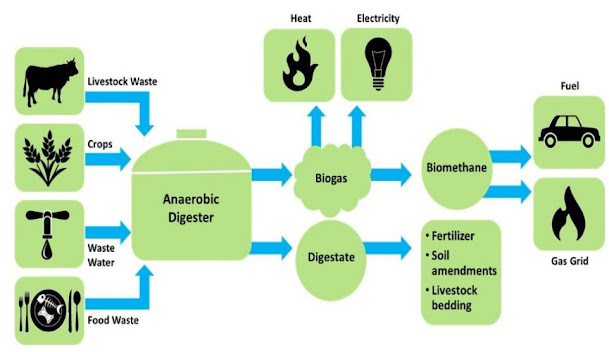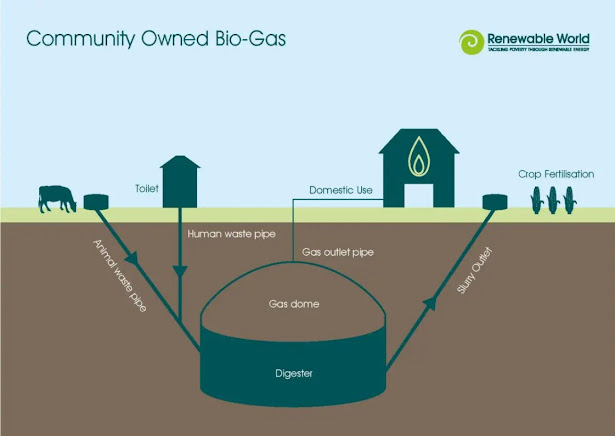Products of Anaerobic Digestion

Anaerobic digestion - in this process, bacteria breaks down organic matter such as animal manure, wastewater biosolids, and food wastes while in the absence of oxygen. - in the reactors, complex microbial communities which digest the waste can be found: The products of this reaction include Biogas and digestate (the solid and liquid material end-products of the AD process) which is discharged from the digester. As previously discussed, the biogas itself is composed of a mixture of different gases which include: methane (CH4) - relatively high percentage (50 to 75 percent) carbon dioxide (CO2) hydrogen sulfide (H2S) water vapor trace amounts of other gases. Digestate - this is the residual material remained after the digestion process is completed. - It is composed of liquid and solid portions which are normally dealt with separately since each have value that can be realized with varying degrees of post processing. USES: With appropriate treatment, both the solid and liquid...

